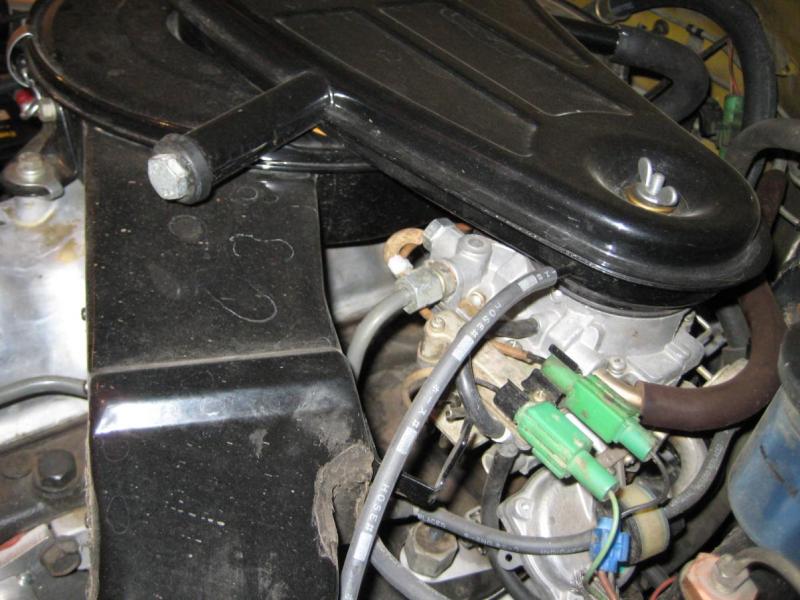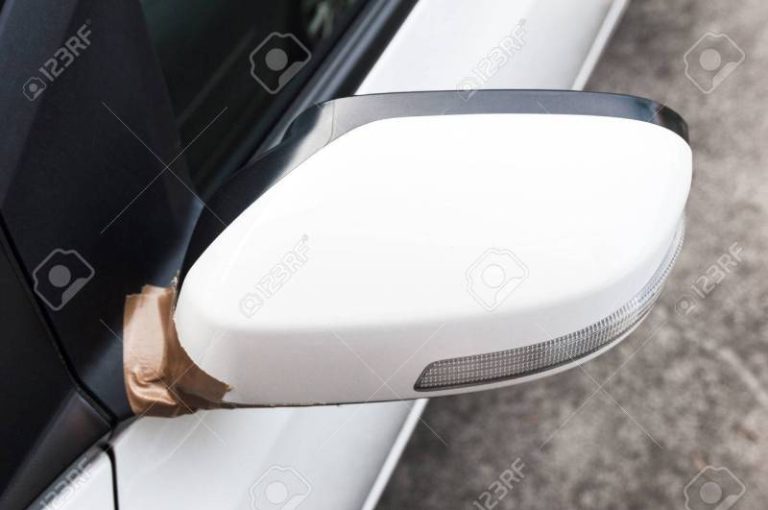How To Fix Car Vapor Lock – When the liquid in your engine changes to the fuel gas, the steam is lock when it is still in the delivery system. Because of this, the management of the fuel pump disrupts, resulting in a complete stable or force loss in the carburetor. When it happens, it becomes very difficult to restart the engine. This problem can affect all types of engines during operation, especially when the outdoor temperature remains high, or when the fuel system is overheated due to lack of insulation. High volatility can also lead to Steam L Lock. If fuel evaporation also causes a stop to your fuel delivery system, you know how to close the fuel length Lock in this article.
You can prevent fuel length locks by removing parts of the fuel line that is directly on the suction manifold. Here are step instructions to do that:
How To Fix Car Vapor Lock

Changing the metal line can also be effective in preventing fuel length locks. Here are step -by -step instructions:
Datsun 1978 280z Vapor Lock Solved By Wrapping With Aluminized Sleeve
Cut the strips from the reflective thermal insulation fabric and wrap them around the fuel lines. You can also use metal fuel or neooprine lines to pack them. Use heat -resistant tape to protect the fabric in place.
Do not use fuel with high volatility. Such fuels have extra alcohol content that can cause problems. If necessary, leave the car’s gasoline tank and replenish it with fuel with lower RVP ratings. This will help remove the steam l Lock Lock by reducing the instability of the gas.
Changing a fuel filter can also help prevent fuel vapor. Follow this step by step instructions:
The new filter will increase the fuel content in your engine and stop the fuel steam from there. If your fuel line has a kinks or a sharp turn, straighten it or go to the line replacement. Make sure you know when to replace fuel filters and how you keep them clean so you don’t have to replace them.
Vapor Lock Cure?
If you do not flush the car’s cooler, it can also be filled with rust, which is why you should replenish it. Follow these steps by step instructions:
If you want to read the same articles on how to turn off fuel steam, we recommend that you visit our car maintenance and repair category. These problems are experienced by many old cars and trucks. Here are some ways to diagnose and fix the situation.
Do Steam Lock Lock at 80 ° or 100 °, on the sea surface or at a 10,000 foot increase, or more than 50 km / h? How about idle in a parade?

Is there a gasoline with 10% ethanol that causes steam lock? Maybe! Or is your cooling system completed?
Vapor Lock & Boilin’ Over, Pt. 1
This article shows you some service technicians to identify the causes of Steam L of Cana and check the boil on your collector’s on cess.
Take a look at a saucepan on the stove before the water temperature reaches 212 ° F. The same process occurs from 90 ° to 100 ° F at the fuel temperature in the lower surface of the carburetor.
The carburetor handles liquid gasoline until the air enters the fuel mixture in the main jet outlet. It is to evaporate when it is.
Photo 1b. Using the infrared temperature gun and measuring the outer surface of the coolant paragraph. Then add about 50 degrees to the coolant temperature to the too.
Vapor Locking With Fitech, Please Help
Steam Lock C (Fuel Camper) Overheating Engines, Inadequate Fuel Supplies, Fuel Pump Mistakes, 90 ° Curt, Cracked Fuel Lines, Excessive Motor Blocks, Overheating of Motor Blocks, Old Radiators and Routine Block Distribution Pipes.
Note: Any restrictions or sharp curves in the formation of a fuel supply system promotes the formation of Steam L Lock Q (fuel Caming).
Fuel test: There is well documented by petrol testing, technical research and development SAE (Society Aut Tomotive Engineers). All petrol manufacturers comply with these tests to measure and control the quality, performance and production of gasoline.

Certified tests for fuel additives are conducted to check in octane, steam pressure (“Biggi” in fuel commerce) and fuel injections, gasification and combustion chamber structures.
Universal Carbureted Inline Fuel Filter 1/4″ Anti-vapor Lock Style 5/16″ In/out
Distillation: All gasoline has a “distillation” curve. Generally, gasoline “light end” hydrocarbons start to boil as low as 90 ° F. The “heavy end” finish boils up to 400 ° F.
Petrol Printing: In Old Days (1925), about 4-5 PSIs were measured by gasoline “read-length” SAE testing procedures.
Today, the pressure of the read vapor varies from 9-13 PSI based on climate, height, geography and season. Gas does not fit all areas or climate.
The meaning of the repressive reed vapor pressure, in today’s gasoline, the hydrocarbon begins to boil at the lower temperature, such as 90-100 ° F. Today’s gasoline provides simple startups and low emissions when heating the engine for our modern vehicles.
Ongoing Fuel Vapor Lock
Modern fuel injection systems work with 30-75 PSI prints. Steam L Lock is not a problem, not with a fuel rod supply line and no return line in the tank.
During the latter gasification years (1975-85), fuel steam return lines were installed from the fuel pump or near the carburetor. Fluid and steam benzene insults were constantly returning to the fuel tank to reduce the problems of Steam L KS. The fluid fuel under this hood and internal fuel lines reduced the temperature.
Octane: Today’s octane level is sufficient to provide good combustion, no pinging (with correct setting specifications), best mileage, good driveability (no stumbling or marsh) and lower emissions.
The exception of this is some muscular applications (mourning restrictions) where high compression conditions (9: 1 or more) can cause explosions.
How To Avoid And Fix Vapor Lock In Your Classic Vw.
Photo 2. Thermostat and coolant connection: Thermostatts and bypass cooler fluid were used on crisler vehicles in the 30s, 40s and 50s for fast blocks and heating heating. When the engine heats off the thermostat, the coolant was forced to move around the block.
Photo 3a. Old, Wide Belt adjustment: Most adjustment specifications enable 3/4-inch/out belt band. If the belt is “glazed” (glider), replace it with a new belt. Be safe and wipe the plates. The dirt building in the tracks results in sliding.
Photo 3b. New Belt tests and adjustments: “narrow” belt adjustments are usually specified within and out of about 1/2 inch. Check the belt inside for cracks and glazing. Clean the membranes on the serpentine belt. Again, the dirt house is slipped. When the new belt expands, arrange a new belt after 100 miles.
Now let’s define the Boin end. If your collector’s item goes to a clear coolant temperature and does not lose the coolant, the cooling system is fine. If your cooling system boils whenever you run it and always need a coolant, the cooling system needs service.
What Vapor Lock Is And How To Fix It
Keep in mind that even if the cooling system is right, your collector’s Object Budget may require the services described here to reduce the “Steam L Lock Q” trends.
Photo 4. Open Cooler Capital: The old (around the pre-’35) cooler systems were sealed caps and open abundant pipes for the atmosphere. Try a liquid or a cup of soluble oil as a coolant mixture. Check the level of the coolant at the beginning as the open systems will lose a little water during each trip.
Photo 5. A model A. Radiator Rock Guard A. I don’t think this design causes airflow restrictions.

Boilin occurs when the coolant temperature is higher than 212 ° F in the open system on the sea surface. In the cooling cap cooling system, the boil-over temperature increases above 212 % depending on the pressure ID. When your collector’s vehicle boils, close the engine to allow it to cool. Add water perfectly, then get your car at home and start determining the reasons for the boil.
Q-jet & Vapor-lock?
While there are no quick answers, this article will review the reasons for steam IDs and Boilin and discuss some approaches to repair, such as: tune-up, first! Weapon temperature, cooling system service, radiator repair/replacement, block coolant. Fuel supply service, head gasket leaks, cracked blocks, carbon buildup, retarded valve timing and changes.
In most cases, a good engine setting with all motor -related systems that the service, repair and factory specifications are adjusted and the vehicle starts very well without pinging.
I recently canceled the ’65 Pontiac GTO with Tri-Power Gasification. The complaint was: “50 km / h during the middle gas opening.” The only configuration of the error adaptation was the basic time at 4 crankshaft degree that was transferred from the specifications. Due to this fault adaptation, mechanical and vacuum advance also had 4 crankshaft degrees that were transferred to medium gas opening at 50 km / h.
Photo 6. Pressure Cooling: Print cover is from 3-18 PSI. Higher pressure, coolant temperature is cooking point. Establish a new specified pressure ID coating to check the boil and coolant damage. Note: Do not install pressure cover on old “open” systems.
Vapor Lock Question
Photo. When you change the main package, wipe the paragraphs with small drill pieces working up to the diameter of the hole. Caution: “Silicate” blockpads will attach a small coolant.
This time error adjusts, causing pinging, leading to overheating. The GTO owner was then excited at the display (no ping)




